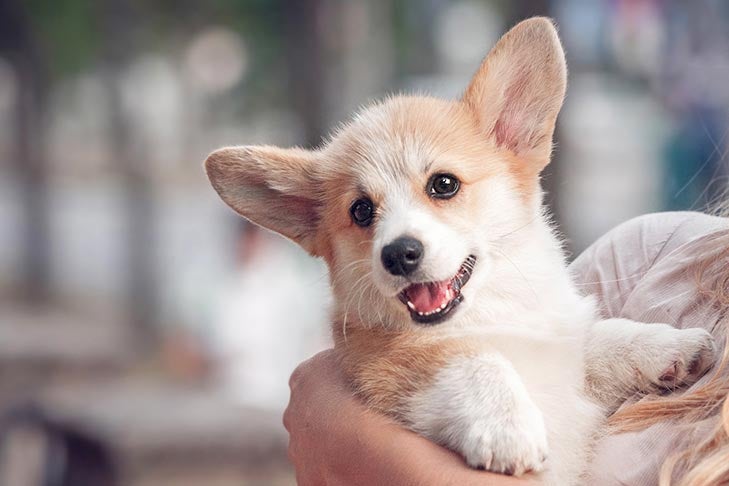My puppy has started biting my hands, my legs, my children’s legs – pretty much any object he can get his mouth on. What is going on?
Your puppy is teething, the same way that human babies and children grow new teeth during their development. Like a human, your pup first grows a set of baby teeth (also called primary or deciduous, meaning they fall out). These teeth are pointed and sharp, which is why they are sometimes referred to as needle teeth.
Dogs have 28 deciduous teeth and end up with 42 permanent teeth. You may find deciduous on the floor, but more likely, your puppy will harmlessly swallow the teeth while he is eating. It is not unusual for some bleeding to occur when the teeth fall or are falling out, but the amount is minuscule and owners usually notice it only if there is some mild red staining on a chew toy.
Puppies will chew on people, furniture, and other objects (including ones you value) that are within their reach; this is part of normal puppy behavior. Dogs learn much about the world around them through how things feel, and a dogs main means of touching and grabbing things is with its mouth.
This tendency is particularly pronounced in breeds known to be “mouthy,” such as retrievers. Chewing also seems to alleviate what is assumed to be discomfort associated with the teething process.
Weeks 5 to 6:
By now all of your puppy’s baby teeth should have come in. Dogs usually have about 28 baby teeth total. Around this time, the breeder will likely have already or will be in the process of weaning the puppies in the litter as they learn to eat moist, soft puppy food.

How to Care for a Teething Puppy
Dr. Reiter says that the discomfort of puppy teething is often overdramatized.
If your puppy is still engaging in normal activities like eating, drinking, socializing, grooming and exploring, then there isn’t really a problem.
If they aren’t doing some of these things, he says, and the pain or discomfort is affecting his quality of life, then your puppy may need to see the vet.
“There is not much for the owners to do during the transition,” Dr. Bannon says. “The best thing is for the owners to supply good, safe chews so that the dog can teethe on appropriate items.”
Look for puppy teething toys that are soft and flexible and bend easily in your hand. “If it is too hard to bend, flex or break, it is too hard to give to the puppy,” Dr. Bannon says.
Puppy Teething Timeline: When Do Puppies Get Teeth
One of the many questions dog owners have is when do puppies lose their teeth? A new puppy can bring both joy and hours of fun, as well as the tendency to chew and teethe on not only your shoes, and the remote control, but your fingers as well. It can take at least eight months for puppies to finish teething, and to learn that chewing on your shoes is not a good idea.
There’s enough to think about and keep track of when caring for a puppy, including feeding, walking, training, and potty training that you might not give their teeth much thought. However, in their first eight-nine months, puppies develop two sets of teeth, and there’s more to caring for them than just making sure they don’t leave marks on your furniture. If you have a new puppy and you’re wondering when your youngster will grow out of the teething phase, read on.
Before we talk about when puppies lose their teeth, let’s look at the puppy dentition. Puppies start getting teeth once they start the weaning process, and this typically starts around five to six weeks of age, and for some breeds, it might not start until eight weeks of age. The puppy dentition contains a total of 28 baby teeth, and puppies are known to have sharp, pointy baby teeth that can wreak havoc on not just your shoes, but your hands, arms, and fingers too.